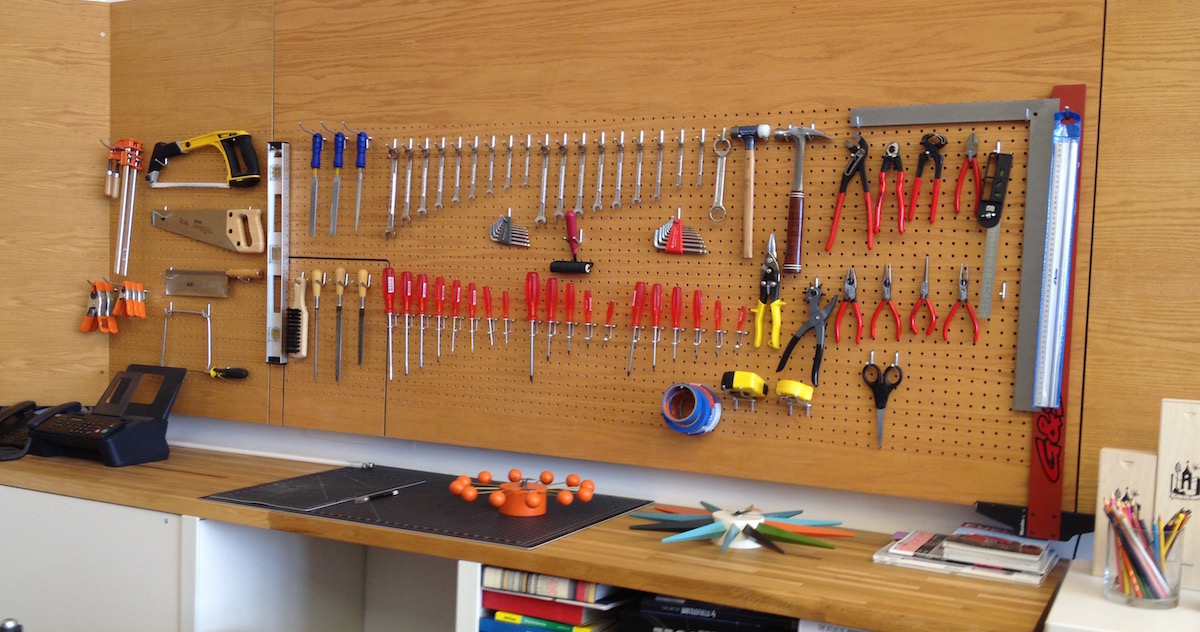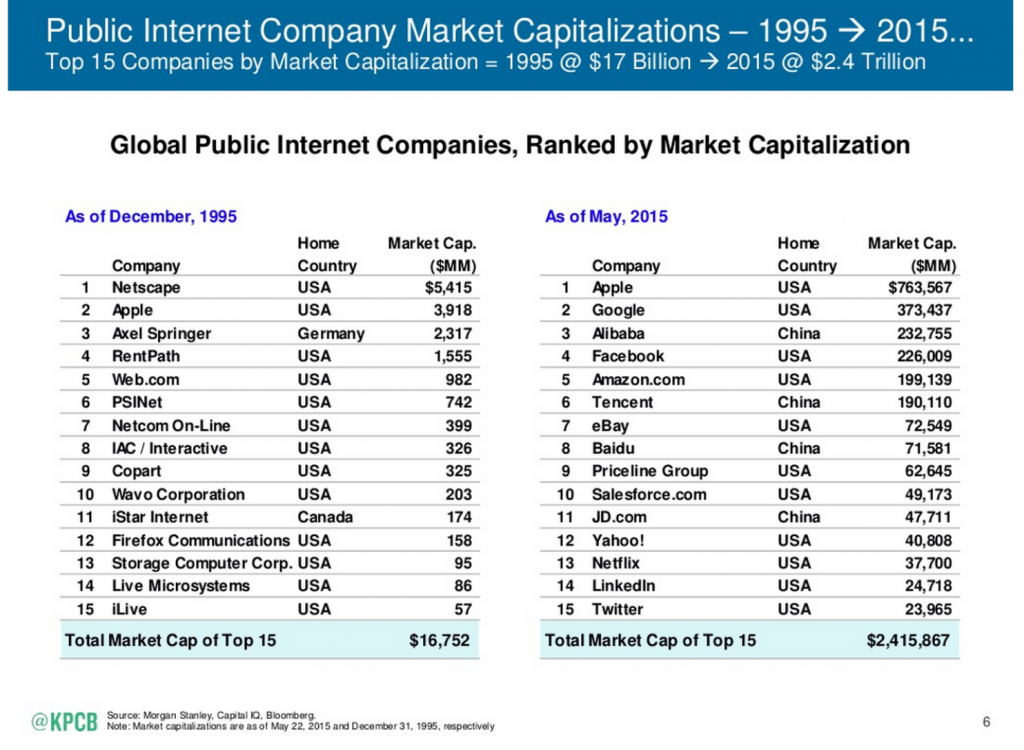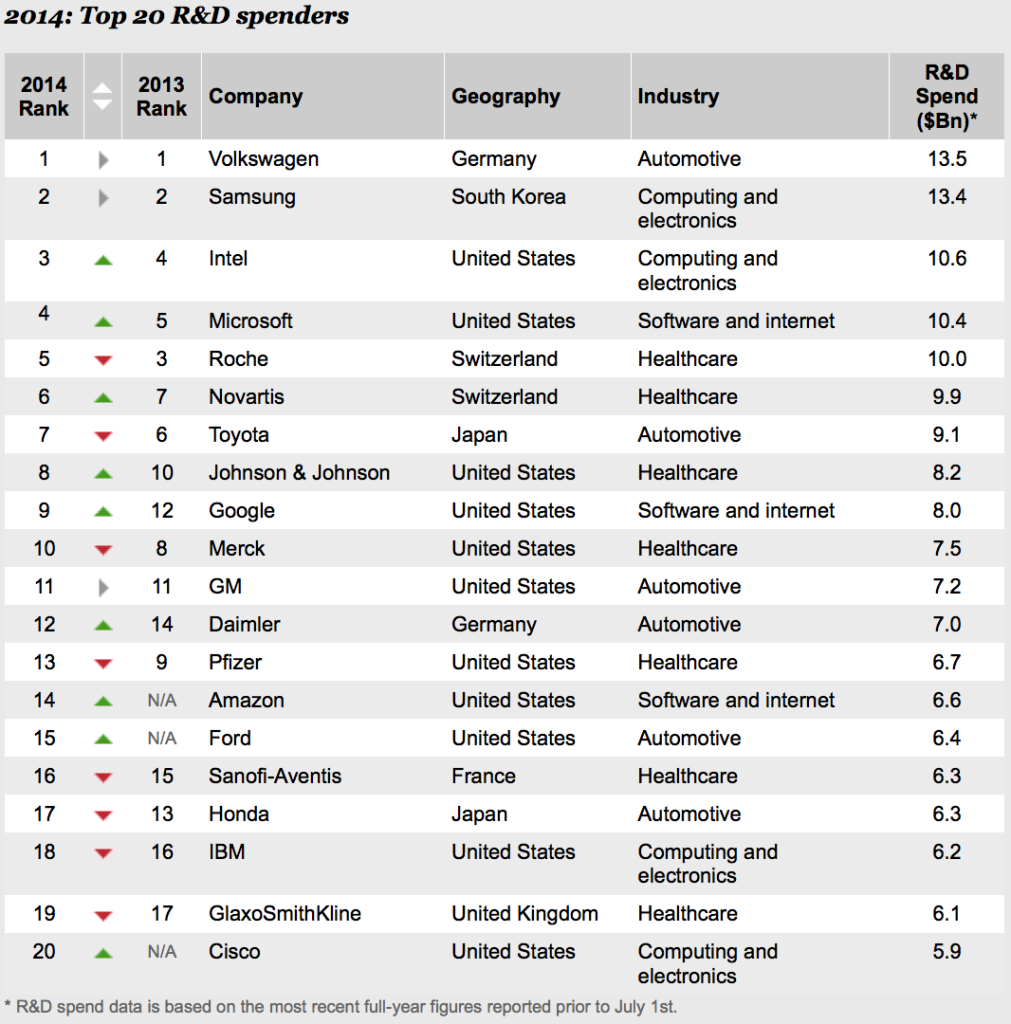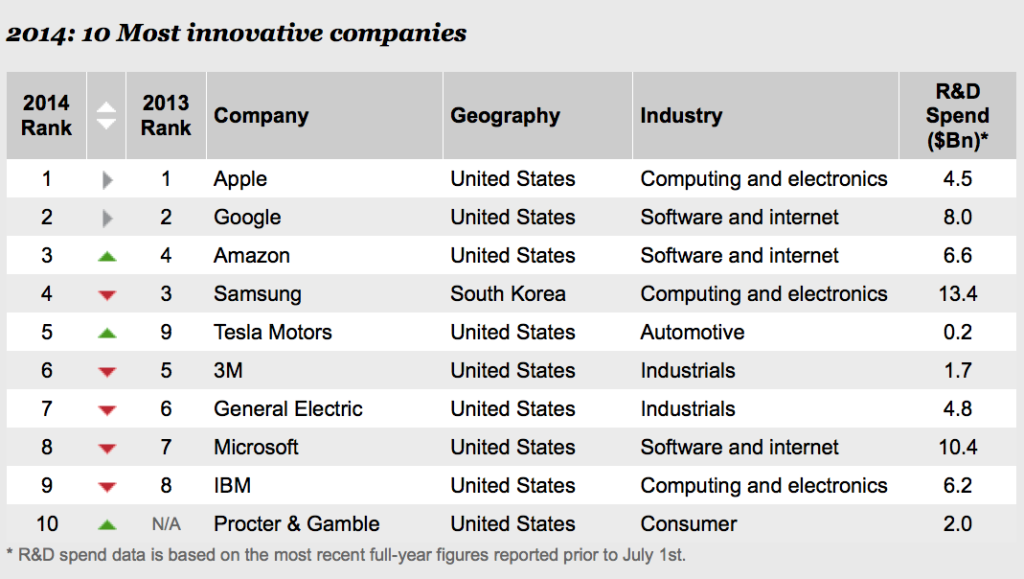
Category: Innovation, Intrapreneurship, R&D
Aug 2
Are the biggest R&D spenders also the most innovative?
Europe’s success with innovation has paled in comparison to what the Silicon Valley or even Asia is churning out. A recent Washington Post article states in the headline (and with many facts) that Europe’s innovation deficit isn’t disappearing any time soon. According to an annual report on Internet trends from Kleiner Perkins partner Mary Meeker, the fifteen most valuable Internet companies today have a combined market value of nearly $2.5 trillion. None of them are European. Eleven are from the U.S.; the other four are Chinese companies.
European governments and companies want to change that but it seems that their answers to such a problem are limited to the same old and ineffective solutions: Grant programs, increased R&D spending, and investing into universities. The latest initiative in Germany is a government driven program known as Industry 4.0 to help manufacturing companies to move to the digital world and prepare for customized mass production trends and more.
PricewaterhouseCoopers worked on Global Innovation 1000 studies and identified the top 20 publicly traded companies worldwide that spent the most on R&D. Six of the top 20 companies are from Europe, with two of them from Switzerland (Roche and Novartis). Two of the six are automotive companies, while the other four are pharmaceutical and healthcare companies. Latter is not surprising, as this industry traditionally spends a lot of money on R&D.
Only three Asian companies are amongst the top 20, two of them from the automotive and one from the electronics sector. But is there a correlation between the amount spent on R&D and (the perception of) innovation? Well, PwC asked Global Innovation 1000 survey respondents to name the companies they thought were the world’s most innovative.
And the results are clear. Apple, that didn’t even make it on the list of top 20 R&D spenders, tops the list, followed by Google and Amazon. Amongst the top 10 not a single European company is listed, and with Samsung only one Asian company, while the rest of the companies are from the US.
But why does R&D spending not lead to more creative and innovative output? Here are some reasons:
- A separate R&D department gives the rest of the company the signal that innovation is to be expected from there and not from the rest of the company. It’s a clear sign that it’s not the job of the rest of the company to come up with ideas and innovations. That’s the R&D department’s job.
- Isolated R&D departments are often too far from customers’ needs and often do not have the regular interaction that other departments have. That deprives them from immediate feedback and the requirement to quick pivots as the lean and agile startup approaches have successfully demonstrated in the last years.
- The incentives for R&D departments (and university research) is to produce patents (or published papers for universities) but not necessarily bringing a new product to the market.
- R&D departments are often composed of engineers with very deep knowledge in their fields, but with a lack of intrapreneurial drive. To bring it to the market is seen as the job of the rest of the company, and they often don’t understand the innovation and the benefit and anyways have way too much too do.
- Too many resources in the R&D departments (and nobody will ever say there are too many resources) can kill an initiative. Often resource limitations make projects successful, as it requires innovators to really cut out the clutter and go down to the real problem. If you try to boil the ocean with the resources that you have, you do too much and it distracts from the real problem at hand.
- R&D departments tend to tackle problems with well sized budgets. Polaroid famously was very proud of lifting $500m projects over the course of 3 to 5 years. But with the innovation cycles accelerating the more comfortable pace that R&D tends to display is not in sync with customer tastes and expectations anymore. You don’t want to learn that the product that you have been working for the past 3 years and now unveil has been surpassed by a disruptive technology. What did it help RIM to build the ever better keyboard for their Blackberrys when people wanted touchscreens?
A more promising approach to innovation is if it becomes the job of everyone in the company. Innovation is not just for products, but also for business models, channels, or customer engagement amongst many more. The R&D department is not coming up with a disruptive business model or innovation in brand. In fact, the most innovative companies innovate in multiple areas at the same time. Apple did not just innovate with a new product, but the ecosystem (iTunes, App development), the delivery model (stores, iTunes), the customer engagement (the ardent fan loyalty without having so much as a loyalty program), the brand, the profit model (clear pricing), or the production process all contributed to Apple’s top position on the list of most innovative companies.
And this should make it clear that innovation is not the job of the university, thegovernment, or the R&D department, but of every employee – and a society.




Recent Comments